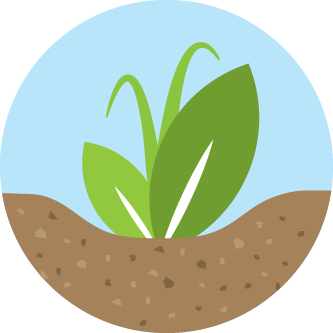×
Soil
It can grow in a wide range of soil from sandy, sandy loam, silky loam to clay having a pH range of 5 – 6.5.
×
Climate Requirement
Large cardamom grows well in forest loamy soils with gentle to medium slopes and it performs well under partial shade (50%). It prefer temperature range of 6 – 27 C, Attitude 900-2400m amsl, rainfall 3000-3500 mm.
×
Uses
It is a high value, low volume and non-perishable spice. It belongs to the family Zingiberaceae under the order Scitaminae, is a perennial herb containing 3% essential oil rich in cineole which is used as flavoring agent and spice.
×
Shade
Shade loving plant (sciophyte). At least 50% of the full day sunlight must be intercepted.
The day light intensity required for optimum growth of Large Cardamom is about 5,000 to 20,000 lux.
Note:Shady trees must be grown to protect the Large Cardamom plants from direct sunlight in summer and from frost in winter. Most suitable tree preferred is Alder tree commonly known as “Tarang” in Mishmi dialect, nitrogen fixing tree which replenishes the soil and helps in maintaining its fertility.
×
Irrigation
• Requires well distributed rainfall spread around 200 days with a total of about 3000-3500 mm/year.
• During dry months the plants should be mulched with dry leaves and irrigated by Jalkunds or drip/sprinkler irrigation.
×
Propagation
Propagation of large cardamom is done through:
1. Seeds
2. Suckers i.e., mature tillers with 1-2 immature tillers/vegetative buds.
×
Land Preparation
Pit size = 30cm x 30cm x 30cm are prepared on contours (May)
Spacing = 1.5 x 1.5 m
Filling up of pits =
• Pit making and filling operation should be completed in the third week of May or 1 month before planting.
• The pits are allowed to wither for a fortnight
• Then filled with topsoil mixed with cow dung compost / FYM @2-3 kg/pit.
×
Planting
• June-July (mid-hills) and April-may (higher hills).
• Suckers/seedlings are planted by scooping a little soil from the centre of the pits and planted up to collar zone.
• Deep planting should be avoided.
×
Application of Manure
Well decomposed cattle manure/compost or organic products @ 5kg/plant should be applied at least twice in a year in:
1. April-May
2. August-September
×
Weeding
Weeding should be done at least twice a year.
1. May-June, i.e. at the beginning of the onset of the monsoon.
2. September-October i.e. before harvesting time.
×
Pollination
• Honeybees and bumble bees are the chief pollinators.
• Maintain 4 honey bee hives in one ha area to increase the productivity of their orchard.
×
INTER CROPPING
Two economic species can be intercropped in the ecosystem in which large Cardamom is grown.
At lower altitudes from 900 to 1500 m asl, Pipli (Piper longum), the climber type Pipli can be grown by allowing the plants to climb on the shading trees.
At higher altitudes from 1500 to 2000 m asl, farmers can intercrop Chirata (Swertia chirata), a high value medicinal crop with Large cardamom.
Like Large Cardamom these species are shade loving species and they can share a similar habitat.
×
HARVESTING
• Harvesting period= September-November
• The spikes are harvested by using traditional knives. The harvested spikes are heaped and capsules separated and dried.
• To enhance maturity bearing tillers are cut at a height of 30-40 cm from ground and left for another 10-15 days for full maturity.
×
CURING
| Traditional methods | Cardamom capsules are cured by direct heating over the fire place, which takes 30 to 50 hours to dry one batch and consumes up to 2.3 kg fuel wood for drying 1kg of fresh cardamom. Under this system the cardamom comes in direct contact with smoke which turns the capsules to dark brown or black with smoky smell. |
| Sun drying | Cardamom capsules are dried under the sun. This gives pinkish colour cardamom capsules with good aroma. |
| ICRI Improved Bhatti | Developed by Indian Cardamom Research Institute (ICRI), Regional Station, Tadong. The system is available in 200 & 400kg capacities. Capsules are heated indirectly at 45-50˚ C. This also retains the original colour and aroma of the capsules. Driers are not commonly used. The farmers still practice the traditional way. |
×
PRODUCTION AND YIELD
Production = Starts after 3 years of planting (maximum production in 7-8th years).
Yield = 100 to 600 kg per acre (good orchard may yield about 400-500 kg dry Cardamom per acre)















